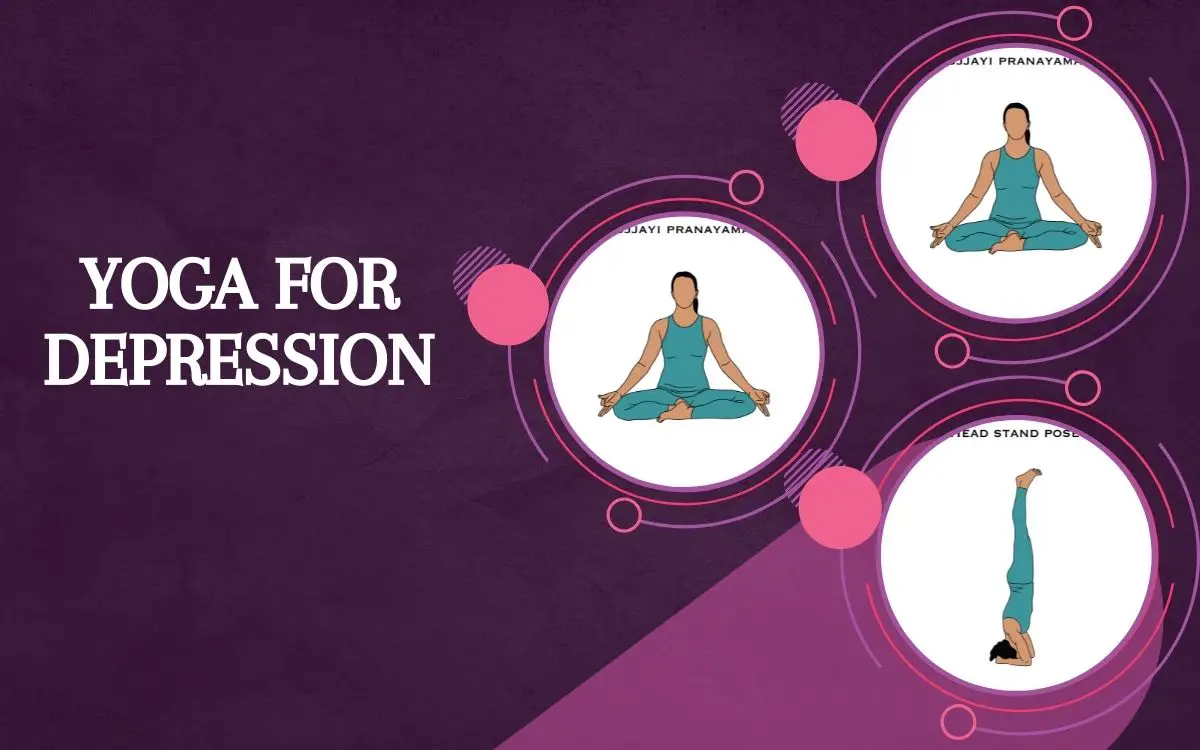Too Much Screen Time? Try These 11 Yoga Exercises For Eyes
The post Too Much Screen Time? Try These 11 Yoga Exercises For Eyes appeared first on The Yoga Nomads.

It is undeniable that most of us are spending way too much time staring at those blue light screens these days. Whether it is for work, play, or to stay connected with loved ones, most of our lives depend on screens. Research shows that screen time can damage eyes and lead to eye strain and focusing problems. Check out these 11 various eye exercise techniques to enhance your eye health and protect those peepers!
Yoga for Eyes Benefits

The research benefits of practicing eye yoga are limited. However, there are both modern and old-school supporters of the practice. Plus, it seems like research just hasn’t quite caught up yet to the potential that eye yoga offers. Read on to learn about the proposed potential benefits of yoga based ocular exercises.
Improve Eyesight
There is little scientific evidence for the benefits of eye yoga on eyesight. However, the great yogi and guru Swami Sivananda discussed the importance of caring for the eyes through specific exercises in his teachings. William H. Bates also claimed that those same eye exercises could improve visual perception.
Glaucoma
Glaucoma is a severe condition that erodes the optic nerve, eventually causing blindness if left untreated. Some say that eye yoga may mitigate the risk of developing glaucoma.
Eye yoga exercises have been touted to decrease intraocular pressure (IOP) inside the eye. If that is true, then eye yoga could be beneficial in slowing the onset of glaucoma. In 2018 the International Journal of Yoga compiled information to support this idea. However, no scientific research or clinical studies have been conducted to support the theory.
Dry Eyes
To date, there is no evidence that eye yoga exercises treat dry eye. Although, it is worth trying the techniques out for some in-the-moment relief.
Cataracts
Some proponents of eye yoga claim that performing eye exercises after cataract surgery can aid in recovery. This claim is based on the eye exercise potential to rebuild ocular strength.
Again, there is no hard scientific evidence for this claim. It is very important for the eye to have time to rest and heal after removing a cataract. Speak to your physician before attempting to introduce any eye yoga routines into your recovery.
Dark Circles
Although having a dedicated yoga practice will leave you feeling revitalized and refreshed, eye yoga specifically won’t target those dark circles under your eyes.
Eye Strain
Ok, ready for some scientifically proven eye yoga benefits, finally?
Research does show that eye yoga reduces eye strain and stress. It does this in two ways. First, by decreasing stress (as stress is correlated with eye strain). Second, eye yoga tones, stimulates, and strengthens the eye muscles making them less susceptible to strain.
A small 2020 study found that performing ocular yoga exercises helped significantly reduce eye fatigue for 32 optometry students. Over the 6 week course of the study, they used eye yoga to strengthen their extraocular muscles.
A small 2016 study found that performing eye yoga exercises for 8 weeks decreased eye fatigue for 40 nursing students.
Focus
Although more research needs to be done to provide scientific backing for this idea, the proof is in the pudding. An eye yoga practice can improve focus, and therefore, improve overall eye health.
As with all yoga asanas, subtle and fine-tuned movements calm the body and strengthen the mind-body connection. The dainty art of eye yoga is not any different. If eye yoga can help calm the mind and body, then it is a healthy stress reduction tool.
And, guess what? Less stress means less risk for glaucoma, headache, and anxiety. By the way, headaches and anxiety are linked to eye strain and other optical nerve conditions.
The second way eye yoga can help you focus is by improving your brain’s response to the visual stimuli around you. You can train your brain to more accurately and more quickly identify what you are seeing.
This 2013 study shows just that. After performing a few eye yoga techniques, participants could more quickly identify spontaneous stimuli.
Although no objective benefits of eye yoga have been measured, it seems that the benefits may simply be eluding the current questions being asked.
Eye Asanas

If you are one of many who experience too much screen time then be sure to practice eye yoga at least once per day. Why not try these asanas out right now!
Focus Shifting
This eye exercise will help ease any eyestrain you experience, plus it will also sharpen your focus.
To perform:
Sit up straight and extend your right arm straight in front of you. Make a thumbs-up with your hand. Look straight ahead, and focus your eyes on your outstretched thumb. Now, slowly move your arm all the way to the left. Keep your head still, but follow your thumb with your eyes as your arm moves across. Slowly move your arm to the right, again keeping your head still as only your eyes follow your thumb. Repeat this exercise multiple times. Switch arms.Focusing
Eye exercises enhance accuracy by training your eyes to focus at different distances. This practice can also help reduce eyestrain.
To perform:
Sit or stand up straight and extend your right arm straight ahead. Makes a thumbs up with your hand. Focus your gaze on your thumb. Slowly, bring your thumb closer to your face, keeping your gaze fixed on your thumb. Slowly, move it further away again. Continue repeating this exercise, moving your thumb forward and back, with your gaze fixed.Palming
This is my personal favorite of the eye exercises. Palming gives your eyes a break from bright light. It is especially important to use this technique if you have too much screen time throughout the day.
To perform:
Sit comfortably somewhere you can rest your elbows. Rub your hands together to warm them up to optimize the relaxing effects of this yogic eye exercise. Cup your hands, close your eyes, and cover your eyes with your hands. Breathe and rest in this position for at least 5 minutes.Eye Rolling
Eye rolling is another of the eye exercise techniques that will help reduce eye strain.
To perform:
Sit in a comfortable position with a tall yogi spine and take a deep breath. Slowly look up to the ceiling, focusing your eyes above you. Moving your eyes clockwise, look all the way to the right, then down, then to the left. Make a full circle until you are looking back up at the ceiling. Then, look straight ahead and take a breath. Repeat several times before switching direction and moving your eyes counterclockwise.Eye Massage
Targeted massage stimulates fresh blood flow and relieves stress and tension. It is no different when you massage the eyes!
If you wear contact lenses, take them out. Using your pointer, middle, and ring fingers; gently press into your upper eyelids for about 10 seconds. Make soft circular movements. Move to the lower lid and perform the same motion.The soft pressure on your lacrimal glands will stimulate tear production and lubricate your eyes after too much strain and screen time for your dry, tired eyes.
Blinking
Most people assume blinking comes automatically. The same assumption could be made about the breath. As with the breath, it is beneficial to focus on blinking intentionally. Blinking more often reduces eye strain because it lubricates the eyes. Creating tears in the eyes pushed out toxins and protect them.
To perform:
Blink at least once every four seconds.Figure Eight
Imagine an infinity sign or horizontal figure eight in front of you. Trace the eight with only your eyes slowly, and about ten times, without moving your head. Blink between repetitions.
Imagine a large 8 on the floor. Moving clockwise, slowly trace the 8 with your eyes. Repeat several times. Switch directions, tracing the 8 while moving counterclockwise. Repeat several times.Strengthen Eyelids
Just like any other muscle of your body, the eye muscles can be toned and strengthened for optimal performance. The muscles surrounding your eye are important for health and longevity.
To perform:
Partially close your eyes so that your eyelid is only half shut Fix your gaze on a far away object to help steady your eyes Hold for 10-15 seconds Close your eyes slowly Take a few deep breaths: on your inhale imagine fresh oxygen flooding your eyes, exhale.Lateral and Medial Eye Stretches
These eye exercises stretch and strengthen your eye muscles called the medial rectus and lateral rectus. You use these muscles when you move your eyes from side to side.
To perform:
Sit up straight and relax. Look all the way to the right, without moving your head, hold for 5 seconds. Blink, and bring your gaze back to center. Next, look all the way to the left (again, without moving your head). Hold for 5 seconds. Blink, bring your gaze back to center. Repeat 3 times. Remember to continue breathing.Repeat the exercise this time changing your gaze to look up, and then down, instead of left and right.
Diagonal Stretches
These eye exercises are similar to lateral and medial stretches, but they strengthen a different set of eye muscles, your superior oblique, and inferior oblique.
Sit up straight and relax. Look up and to the right, hold for 5 seconds. Blink and bring your gaze back to the center. Look up and to the left, hold for 5 seconds. Come back to center. Look down and to the right, hold for 5 seconds. Come back to center. Look down and to the left, hold for 5 seconds. Repeat 3 times.Take Breaks
Although this is not technically a yogic eye exercise, it is certainly worth mentioning when discussing eye health in relation to screen time. Taking intentional breaks during long periods of focus and concentration will reduce eye strain. The 20-20-20 method has scientific backing to reduce eye strain, eye fatigue, and dry eyes.
To perform:
When you sit down to do a lot of computer work, set an alarm to go off in 20 minutes. Every 20 minutes, look away from your screen at an object that is 20 feet away, for 20 seconds.Other Tips To Reduce Eye Fatigue and Eye Strain
 Visit your optometrist at least annually
Invest in blue light glasses
Use eye drops
Only look at screens in lit rooms
Limit screen time at night
Adjust the brightness on your screen
Visit your optometrist at least annually
Invest in blue light glasses
Use eye drops
Only look at screens in lit rooms
Limit screen time at night
Adjust the brightness on your screen

 KickT
KickT 






























.jpg&h=630&w=1200&q=100&v=154b70b92d&c=1)
